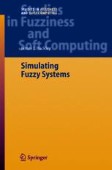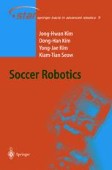Search
Search Results
-
Optimizing a Production Line
The simple production line considered in this chapter is shown in Fig. 20.1. This problem has been adapted from an example in [1]. This situation is...
-
Queuing I: One-Step Calculations
In this chapter we show situations where simulation can produce the same results as fuzzy calculations which employ the extension principle. We argue...
-
Simulation Programs
In this chapter we present some of the GPSS programs used in Chaps. 9–26. We had to omit many programs in order to keep this chapter. less that 20...
-
Summary and Conclusions
The first objective of this book is to explain how many systems naturally become fuzzy systems. The second objective is to show how regular (crisp)...
-
Machine Shop I
The queuing system in this chapter is shown in Fig. 11.1. This application was adopted from a problem in ([1], p.594). We continue this problem in...
-
Inventory Control II
This chapter continues the inventory control problem studied in the previous chapter. The new system is shown in Fig. 17.1. We have added two things...
-
Project Network Model
The project network diagram is in Fig. 26.1. This problem is modelled after an example in [2]. The project consists of various jobs that must be...
-
Queuing II: No One-Step Calculations
In this chapter we will study the fuzzy system shown in Fig. 5.1 now reproduced as Fig. 9.1. This example was adapted from an example in [1]. The...
-
RTLinux-Based Controller for the SuperMARIO Mobile Robot
In the last years a new way to implement Real Time control systems has been opened, in connection with the diffusion of the open-source operating...
-
Vision Based Motion Planning of Humanoid Robots
Vision is the most effective sensing form for humans in understanding their environment, recognition of the objects around them and navigating from...
-
Evolution of Locomotion Controllers for Legged Robots
The construction of a locomotion controller for legged robots is a difficult and time consuming process. This task can be automated through the use...
-
Thresholding Segmentation and Classification in Automated Ultrasonic Testing Image of Electrical Contact
This paper is concerned with the thresholding segmentation of ultrasonic C-scan image for defect with artificial intelligence and support vector...
-
4. How to Decide and Act? Use Intelligent Systems and Control Techniques
In robot soccer, the game situation in the playground is typically read in terms of the robots’ postures and the ball’s position. Using real-time...
-
On The Problem of Simultaneous Localization, Map Building, and Servoing of Autonomous Vehicles
In this chapter, we consider three of the main problems that arise in the navigation of autonomous vehicles in partially or totally unknown...
-
Model-Based Friction Compensation
Compensation of nonlinear friction terms is a most challenging application of high resolution encoders, which are nowadays getting available for...
-
Fuzzy-Neural Impedance Control for Robots
In conventional impedance control, the difficulties encountered in obtaining an exact system dynamic model and selecting its impedance parameters...
-
Coordination and Control of Multiarm Nonholonomic Mobile Manipulators
This chapter deals with the problem of suitably coordinating the manoeuvring of a nonholonomic vehicle and the motin of a supported manipulation...
-
Adaptive Robust Fuzzy Tracking Control for a Class of Nonlinear Systems
The tracking control problem for a class of nonlinear systems with uncertain system function and uncertain gain function, which are the unstructured...
-
Measuring and Improving Performance in Anti-Windup Laws for Robot Manipulators
In this chapter we provide a high performance solution to the anti-windup problem for control systems of robot manipulators undergoing actuator...
-
Robust Stability of Interval Lur’e Systems: A Bilinear Matrix Inequality Approach
This paper provides a sufficient condition for an interval Lur’e system to be globally exponentially stable with a dam** factor. The Lur’e system...
